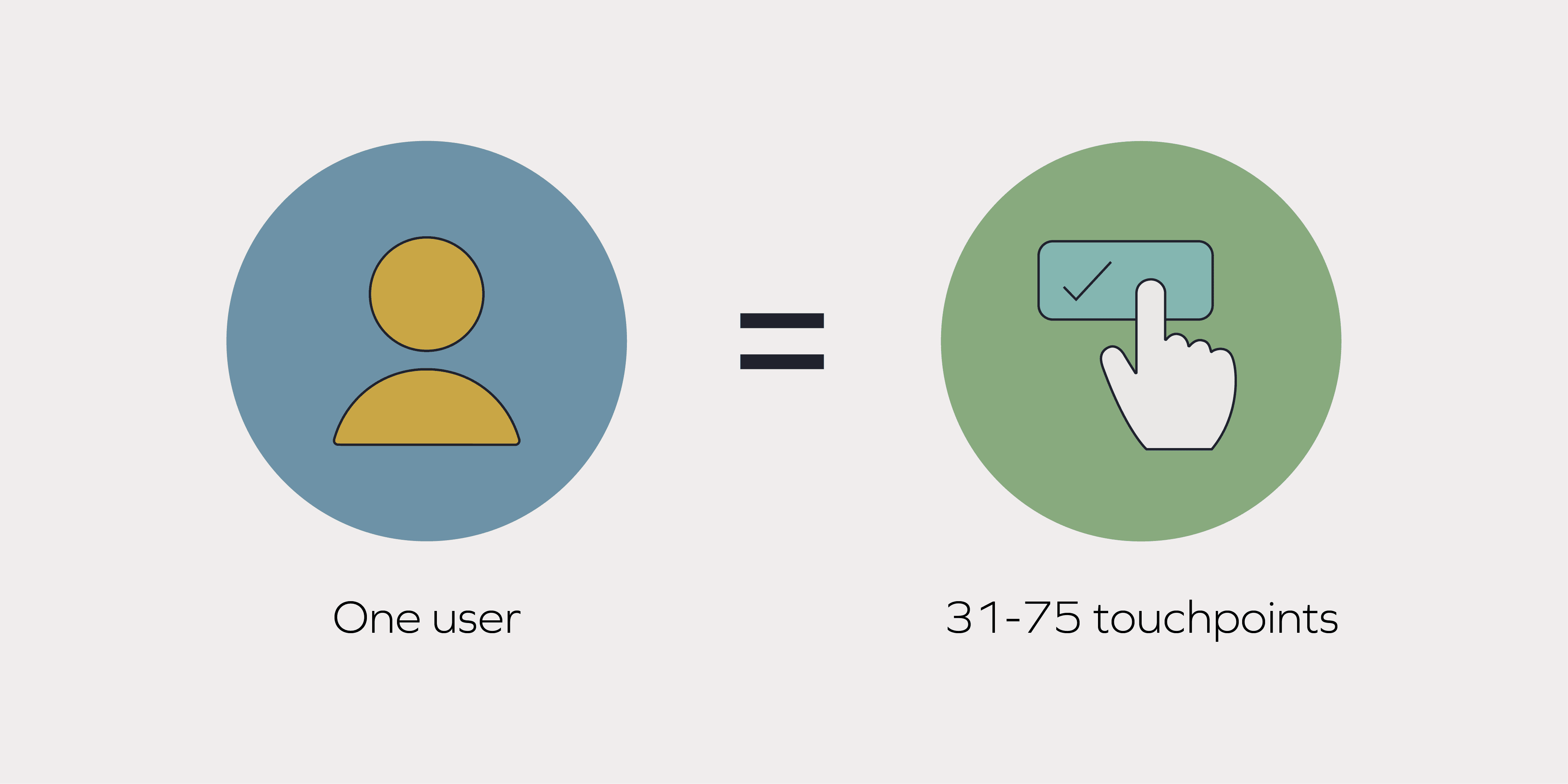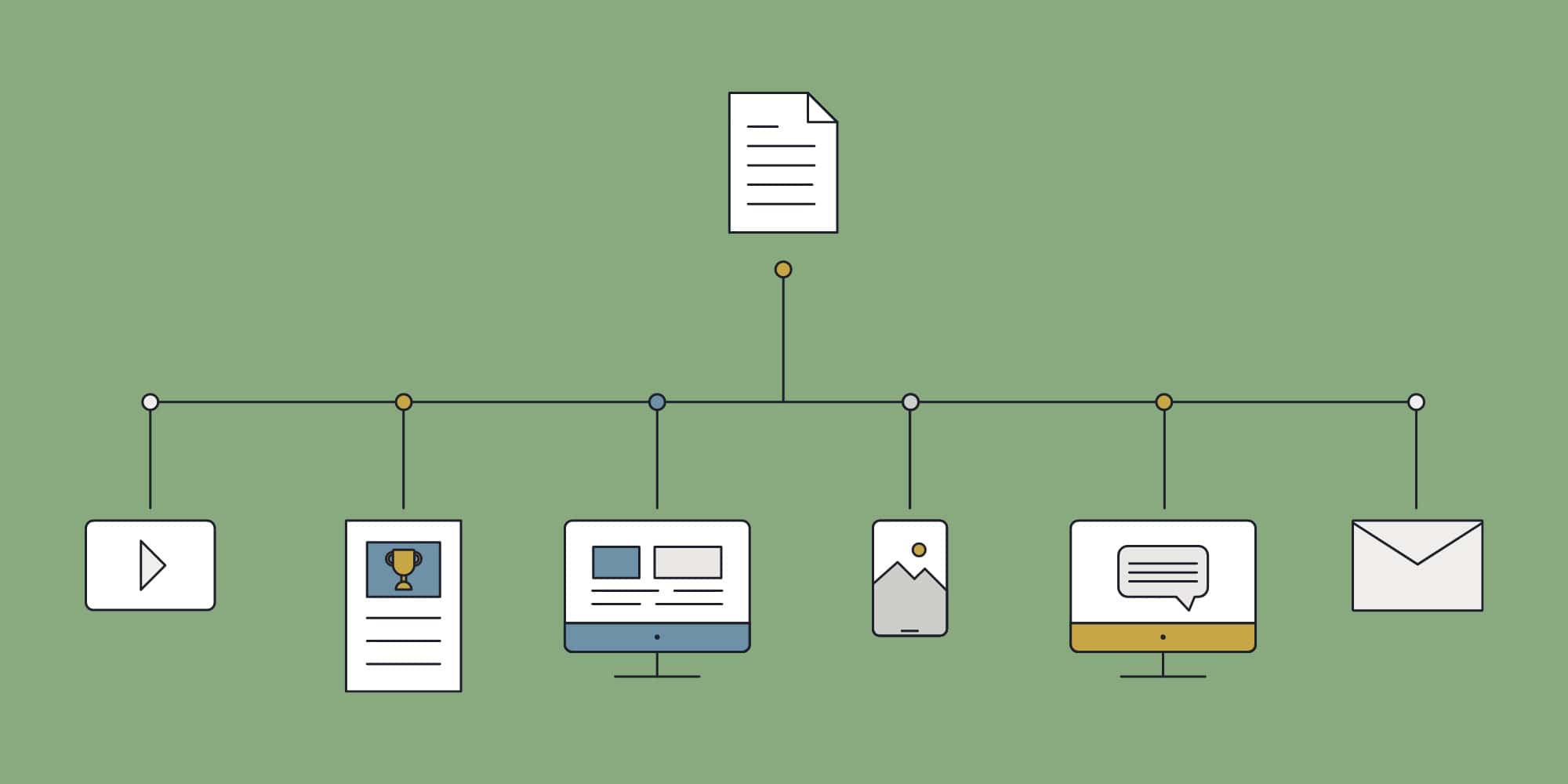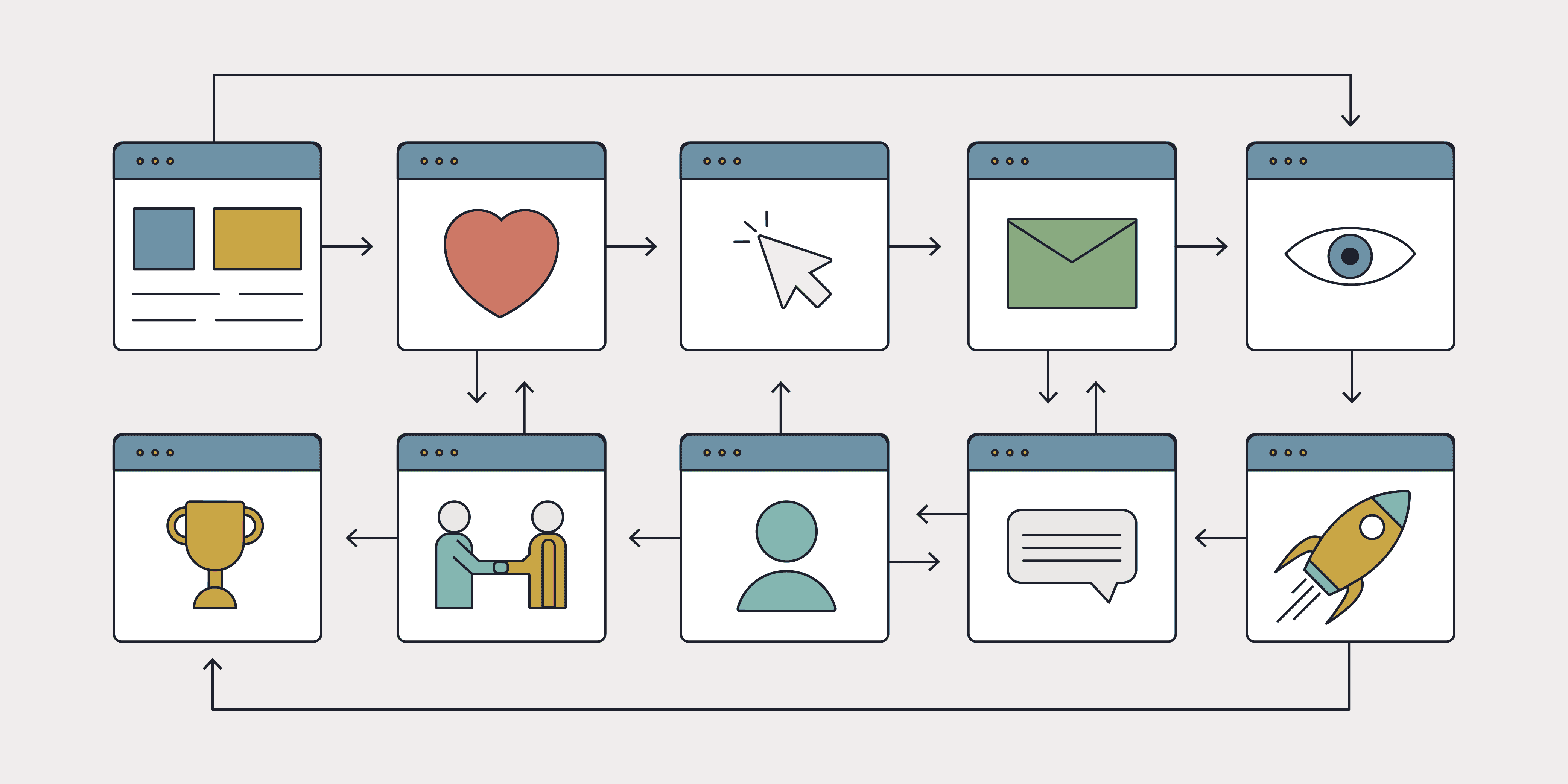How to make the most of your B2B marketing and media budget
18th April 2024 •
18th April 2024 •

In today’s climate, we can’t afford to simply throw money at our marketing and media channels and hope for the best. Of course, we wouldn’t expect you to try such a scattergun approach, but now more than ever, your B2B marketing budget decisions must be tactical. We need to be spending wisely. So, what does that mean? For us, first and foremost, it’s about understanding that you’re playing the long game.
In our latest blog about brand building, we called out HockeyStack’s recent finding that it takes over 700 LinkedIn impressions to earn a website visit. The report also covers the average number of touchpoints B2B SaaS organisations need to have with their prospects to achieve that highly coveted conversion.
Based on its data, HockeyStack outlines that, depending on the average contract value, a prospect will likely act after 31-75 touchpoints. The trend suggests that lower value contracts will need fewer touchpoints – which makes sense. But even so, 31 touchpoints is significant. Especially, when you want to see results and prove you’re delivering against your KPIs, today.

When looking at your budget, it’s crucial to keep these insights in mind. If you’re not seeing instant action, that doesn’t mean your efforts have been a flop. In fact, they could be inching you closer. As long as you take a holistic look at the varying journeys your prospects could take, and keep their differing needs front of mind, you’ll be making headway.
“ Your ideal customer profile (ICP) should be as specific as it can be. ”
With that in mind, your ideal customer profile (ICP) should be as specific as it can be. That’s why one of our core services for our clients is building personas. How can you truly speak to – and reach – someone if you don’t understand their needs and motivations? If you’re looking at how to spend your budget and you don’t have this deep knowledge of your audience, then that’s definitely one sound investment.
Beyond user interviews, another way you can enrich these personas is with data from your CRM (customer relationship management) system. This insightful CRM data can often be underutilised. Leveraging it is sure to help make your budget go further.
Now might also be a good time to review and validate your CRM data. Is everything up to date and have you populated each profile with all the relevant information you have? With this in place, you’ll be giving the whole business a single source of truth for understanding and nurturing your prospects. From learning the core characteristics of existing customers to inform the pipeline to realising what company size or industry is your sweet spot, digging into this data will help you to establish the lifetime value of customers and, as a result, should pay dividends.
“ If you can’t attribute activities to target personas, you’ll likely want to re-evaluate things. ”
Once you have built out these insight-rich personas, as with your CRM data, make sure you use them to lead your future marketing and sales decisions. If you can’t attribute activities to target personas, you’ll likely want to re-evaluate things. Let your users guide your decisions and you can’t go far wrong.
A lot of your content may well have solid foundations, but now, with your ICP firmly cemented, perhaps you can see a disconnect. What you thought was once true has now been disproved, or maybe you just have better user insights that you want to focus on. Rather than starting from scratch, look for opportunities to optimise and refresh what you already have. By doing this, you’ll have more budget to put into your media spend – maximising the reach and the returns.
In fact, we often recommend to our clients a content strategy with an 20-80 split. 20% of your efforts should be spent on crafting high-value content, and the other 80% should be dedicated to distributing it to ensure it gets in front of the right people, in the right format.
So, conduct a content audit to assess what you’re working with. Review performance metrics and speak to your colleagues to understand if there are any content gaps you need to plug.

When content creation is the way to go, think about how to get more for your money. Topical content has its place but, when purse strings are tightened, opt for collateral that has longevity. Not only does creating an article on an evergreen topic enable you to be relevant for longer, the SEO returns will likely be better too.
Depending on the purpose of your marketing activity, different channels and different media spend splits will be appropriate. Google and LinkedIn ads are safe bets, but as such they’re not cheap. Think about how you can make the most of a PPC campaign by refining the parameters. And it sounds obvious but, you’d be surprised… make sure you’re sending traffic to the best possible page to continue their journey with you. There’s no point paying for them to arrive on a page that’s not been reviewed with this project’s objective in mind. If the content needs to be optimised, do this before you put the campaign live.
Similarly, consider how you can use your owned media on LinkedIn to bolster your paid activity. Remember, your established following is likely to include warmer leads, so think about how their content needs will differ from those you’re reaching with a paid campaign. Should you focus your efforts on picking up more followers with the intent to nurture them with consistently high-quality owned content in the coming weeks and months? Possibly. (We’d prefer to discuss your unique business objectives before saying definitely!)
What’s more, it’s also worth noting that according to this HockeyStack report, some channels can have a detrimental effect on your customers’ journey – a one-step-forward, three-steps-back situation. Display and TikTok ads were some of the worst offenders, adding seven more touchpoints to the conversion path.
“ Topical content has its place but, when purse strings are tightened, opt for collateral that has longevity. ”
If you’re planning to react to the hot topics do so with caution. For instance, combining AI-written content with TikTok ads could spell disaster. As mentioned, TikTok isn’t necessarily the miracle worker that it’s been built up to be. And with Google’s recent algorithm update penalising AI content within search results, it’s important you don’t make decisions too rashly.
If you are looking to invest in AI to support content creation, remember Google favours expertise, experience, authoritativeness, and trustworthiness (EEAT). So, make sure anything it creates has a human sense-checking it against this criterion.
Research your options and run small-scale, test-and-learn projects to protect your budget, impressions, and rankings.
What are the chances that your next campaign captures your audience at the perfect moment when they’re ready to invest? The reason you might not be getting that conversion could be as simple as they don’t want to buy what you’re selling – at that particular moment in time. And that’s fine. That’s one of the many reasons why branded content has its place in a modest budget. Your always-on presence is what will keep your business in the back of their mind. So, when the time is right, they’ll know exactly where to go.

Yes, we know that getting them to your website is a win. But which page will get them one step closer to a purchase? And what type of content will perform best?
As much as we talk about turning a cold audience into warm leads, the process is far from linear – and it’s certainly not standardised. After all, even in the realms of B2B, we’re still dealing with the unpredictability of human behaviour.
Analysing the data, acting on these insights, and regularly reviewing the performance of updates is the best way forward. But don’t forget to sanity check your optimisation journey against what you know of your prospects. Ideally, you want to look at what the data is telling you through the lens of validated user insights.
Taking an iterative approach not only means you’re using smaller budgets; it also means you’re spending them on optimised content. Ultimately, it’ll make your money go further.
